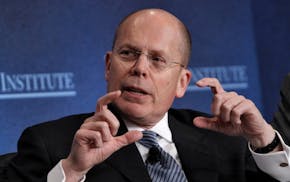When the COVID-19 pandemic hit, Abdi Daisane watched enrollment at his St. Cloud day care center plummet.
By the end of 2020, most children at Blooming Kids Child Care Center were gone, and with them, tuition that paid the bills. Like child care providers across the U.S., Daisane credits his ability to stay open during the darkest days of the pandemic to federal aid, including a monthly grant through the American Rescue Plan.
"Without that grant, we would have closed down," Daisane said.
After two years and $24 billion, the Child Care Stabilization Grant program will end Saturday, leaving providers without key support. Though Minnesota is among states where legislators recently approved new child care funding, providers said that after decades of chronic underfunding, they're still operating on a razor-thin margin.
"I feel worse now than I did during the pandemic, just because we don't have that support anymore," said Christina Valdez, executive director of Listos Preschool and Childcare in Rochester.
Many states are bracing for the end of the federal grant program to spell trouble for child care providers, families and local economies. More than 70,000 providers are likely to close, leaving more than 3 million children without care and forcing parents — especially mothers — to reduce work hours or leave the workforce. That could total $9 billion a year in lost earnings, according to a June report from the Century Foundation.
This year, the Minnesota Legislature approved a range of child care investments, including about $316 million for 2024 and 2025 — plus $260 million for each following two-year span— to continue monthly grant payments to providers.
Without that sustained funding, the Century Foundation report predicts, more than 70,000 Minnesota children could lose care. But the legislative investment should help the state avoid the setback predicted elsewhere, said Laura Valle-Gutierrez, a Century Foundation fellow and one of the report's authors.
"There's still a question of, 'What is enough to save a sector that has been struggling for a long time?'" she said.
The number of licensed Minnesota providers has been declining for years, making it tough for families to find affordable care.
"It's very difficult," said Martin Ramirez, a construction worker who picked up his 2-year-old daughter, Ximena, from Listos on Wednesday afternoon. "If it's super expensive, sometimes it's not even worth it to work."
Child care was in crisis before the pandemic, with a mismatch between consumer cost and worker pay that has only become more severe amid low unemployment and rising wages in other sectors.
The median wage for a child care worker in Minnesota is $14 an hour, one of the lowest for jobs that require at least a high school diploma, said Tikki Brown, assistant commissioner for children and family services at the Minnesota Department of Human Services (DHS), which administers the grants.
To that end, the state will require child care center grant recipients to put all of the money toward employee compensation costs, according to DHS. Family child care providers will have more flexibility.
The "transition grants" the state has awarded providers to bridge the gap between the federal and state programs have so far ranged from $375 to $475 a month per full-time employee. The dollar amount providers can expect is still undetermined and might fall short, said Rep. Dave Pinto, DFL-St. Paul, who chairs the House Children and Families Finance and Policy Committee.
"My concern is that even with this, the people who do this work are still making very little money and certainly less than they would in almost any other job in our economy," he said. "We're just trying to stave off collapse."
Brown said the DHS incorporated provider input into the new grant program and will continue to do so. But while the state hammers out the details, some providers are voicing worries.
Longtime St. Paul-based family child care provider Cyndi Cunningham said certain program requirements are raising red flags, including needing to share operating expenses and children's daily sign-in information with the state. A minimum attendance requirement and limits on how many days off a provider can take are also concerning.
Some providers are considering not applying for the grants as a result, said Cunningham, public policy board chair for Lead & Care, formerly Minnesota Child Care Professionals Information Network.
"I'm using the word 'strongarm,'" she said. "This is such an overreach and such a strongarm on independent small businesses."
Brown said she's aware of the concerns.
"We want to ... have all of the assurances that can be provided to ensure that we aren't leaving ourselves open to fraud or misuse of the program," she said. "And so I think these are protection measures that will ensure that the program can operate into perpetuity and with public confidence."
Some providers said though they're happy to have continued government support, they're worried it simply won't last. Though the grant program is intended to be permanent, a future Legislature could make different decisions.
"The funding has been so volatile for child care that I think a whole lot of providers are like, 'I'll believe it when I see it,'" said Clare Sanford, government relations chair for the Minnesota Child Care Association. "We can't continue building a system if people think the floor's going to fall out from under them any day."

Prices for international flights drop as major airlines navigate choppy economic climate
Minnesota's med spa industry rises in popularity — and with little regulation

Hundreds line up at Best Buy to nab Nintendo Switch 2, in scene like '90s opening parties

